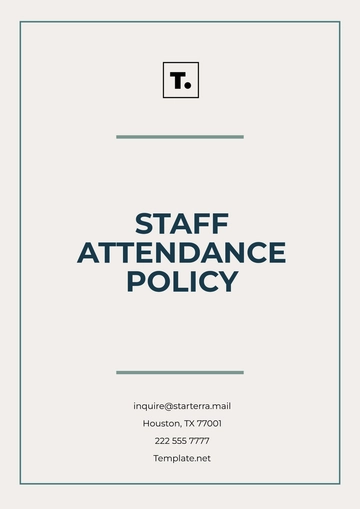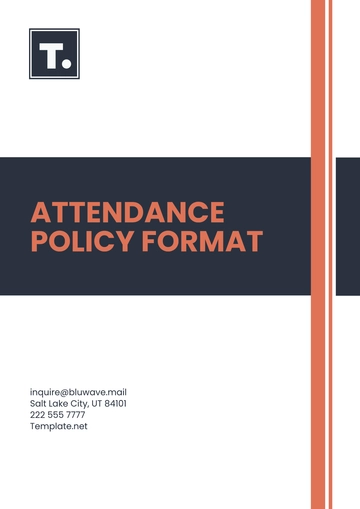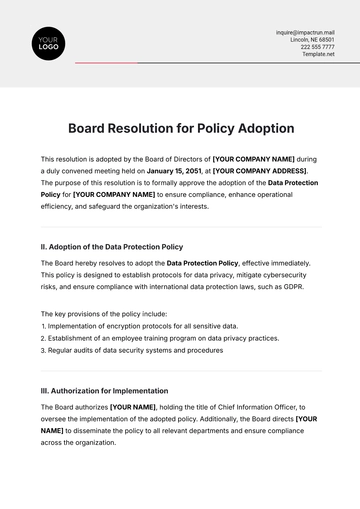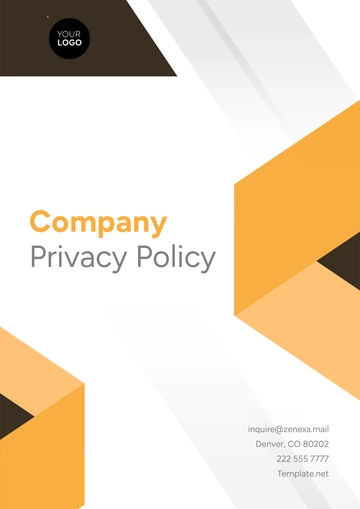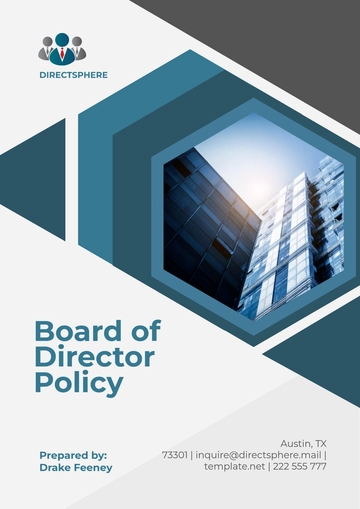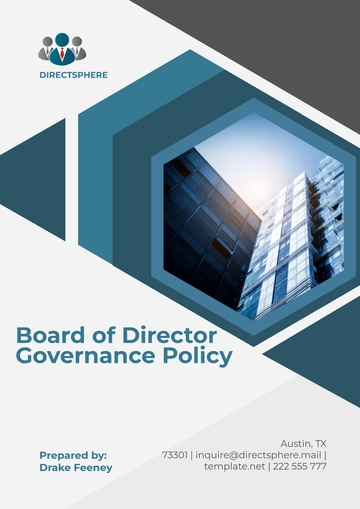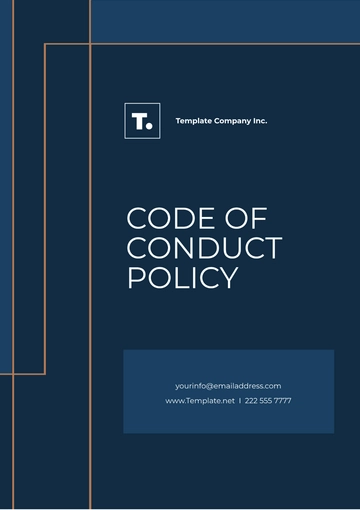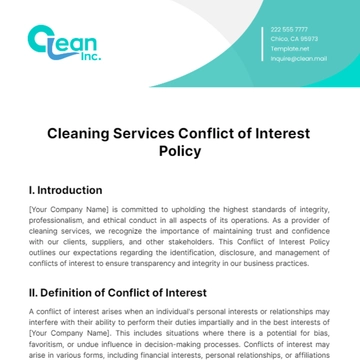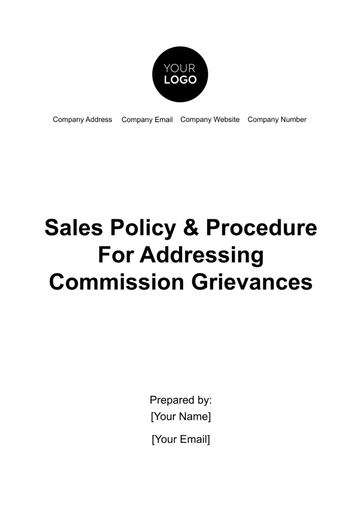Free Sales Policy & Procedure for Onboarding
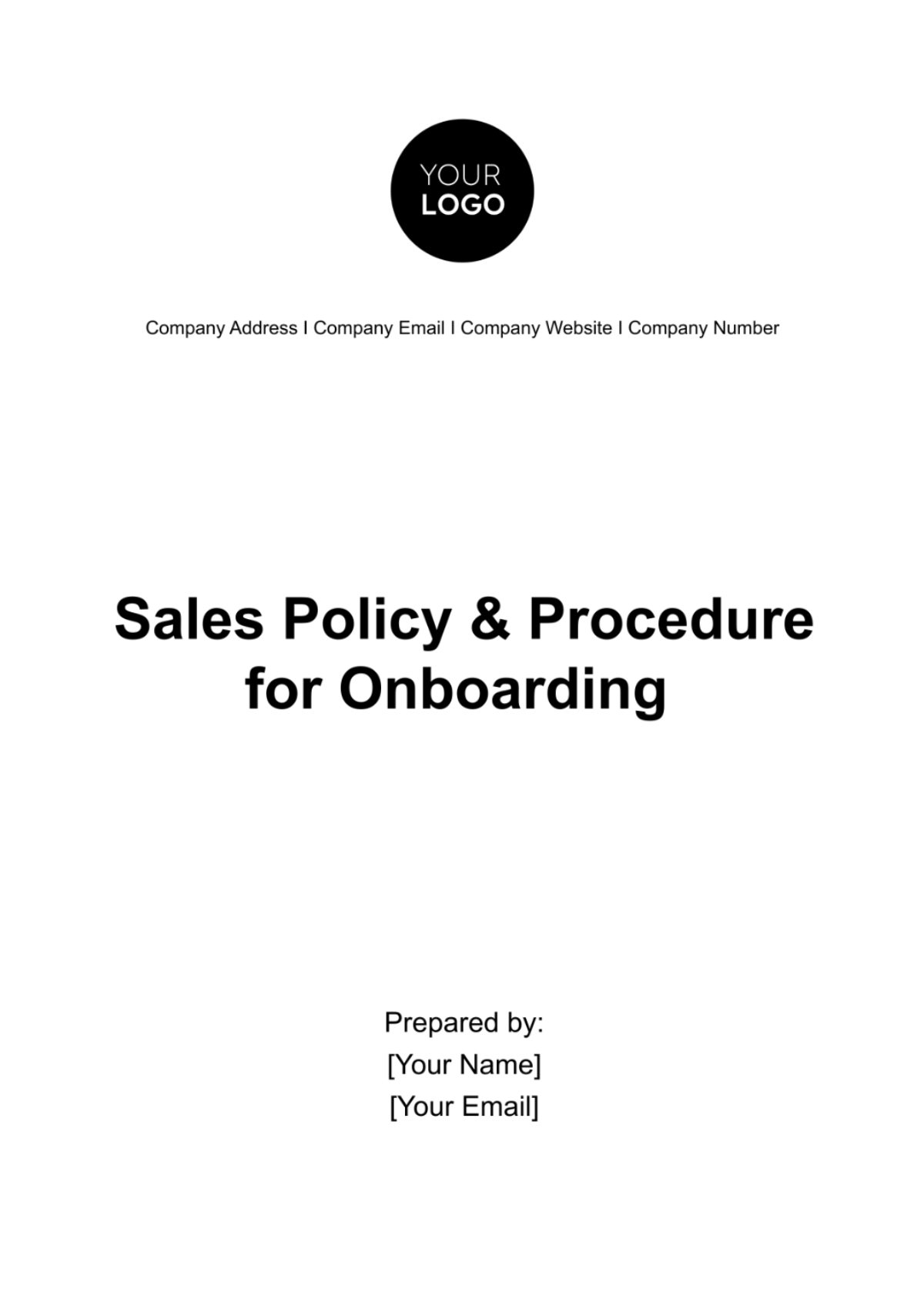
I. Introduction
A. Purpose
This Sales Policy & Procedure for Onboarding serves as a comprehensive guide for [Your Company Name]'s sales team to effectively onboard new clients and customers. It outlines the processes and procedures to ensure a seamless transition from prospecting to client acquisition and ongoing support.
B. Scope
This policy covers the entire sales onboarding process, including prospecting, lead qualification, needs assessment, agreement and contracting, account setup, training, and ongoing support. It applies to all members of the sales team, account managers, customer support staff, and any other personnel involved in the onboarding of new clients.
C. Audience
This document is intended for use by the sales team, account managers, customer support staff, and any other personnel involved in the onboarding process. It provides guidance and procedures to ensure consistency and efficiency in onboarding new clients and customers.
II. Sales Onboarding Process
A. Client Acquisition
Prospecting
1.1 Market Research
Utilize market research tools and industry databases to gather insights into the target market segments.
Analyze market trends, competitor activity, and customer behavior to identify potential opportunities for client acquisition.
1.2 Referrals
Cultivate strong relationships with existing clients through exceptional service and support.
Proactively ask satisfied clients for referrals and recommendations to expand the client base.
1.3 Networking
Attend industry events, conferences, and trade shows to network with potential clients and industry influencers.
Participate in online forums, LinkedIn groups, and professional associations to establish connections and build rapport with prospects.
Lead Qualification
2.1 Budget
Assess the prospective client's financial capacity to invest in the products or services.
Determine the budget range within which the client is willing to allocate funds for the proposed solution.
2.2 Need
Conduct in-depth discussions with the prospect to uncover their specific pain points, challenges, and business objectives.
Identify how the offerings can address the client's needs and deliver tangible benefits.
2. 3 Timeline
Determine the client's timeframe for implementation, launch, or deployment of the proposed solution.
Assess the urgency and priority of the client's project to align resources and prioritize sales efforts accordingly.
Initial Contact
3.1 Outreach Strategy
Develop a multi-channel outreach strategy encompassing email, phone calls, social media, and direct mail.
Personalize communication to each prospect, highlighting relevant case studies, testimonials, or success stories.
3.2 Introduction
Introduce the brand, mission, and core values to establish credibility and trust with the prospect.
Clearly articulate the value proposition and unique selling points of the products or services.
III. Agreement and Contracting
A. Proposal Presentation
Prepare a comprehensive proposal outlining the proposed solution, including pricing, terms, and deliverables. Ensure that the proposal is tailored to address the specific needs and pain points discussed during the needs assessment phase.
Schedule a presentation meeting with the client to review the proposal and address any questions or concerns they may have. Emphasize the value proposition and benefits of the proposed solution, highlighting how it addresses the client's challenges and objectives.
Customize the presentation to resonate with the client's industry, company culture, and stakeholders. Use visual aids, case studies, and testimonials to illustrate successful outcomes and build confidence in [Your Company Name]'s capabilities.
B. Contract Negotiation
Review the proposed contract terms and conditions with the client in detail, ensuring clarity and transparency. Address any discrepancies or areas of concern raised by the client and work collaboratively to find mutually acceptable solutions.
Identify areas of negotiation or modification required to align the contract with the client's expectations and preferences. This may include adjustments to pricing, scope of work, payment terms, or service level agreements.
Engage legal and finance teams as needed to finalize contract terms, ensure compliance with company policies and regulatory requirements, and obtain necessary approvals. Keep the client informed throughout the negotiation process to maintain transparency and trust.
C. Contract Signing
Provide the client with the finalized contract for review and signature, either electronically or in person. Clearly outline the next steps and expectations for both parties post-signature.
Coordinate the signing process efficiently to minimize delays and ensure timely execution of the agreement. Follow up with the client to confirm receipt of the signed contract and address any outstanding issues or questions.
Initiate the onboarding process promptly upon contract execution, assigning responsibilities and resources as needed to deliver on the commitments outlined in the agreement.
IV. Onboarding
A. Account Setup
1. Collect all necessary client information and documentation required for account setup, such as contact details, billing information, and technical specifications. Ensure accuracy and completeness to expedite the setup process.
2. Create client accounts in [Your Company Name]'s system and configure settings according to the agreed-upon contract and client preferences. Verify data integrity and ensure compatibility with existing systems and processes.
3. Conduct thorough testing and validation of the account setup to identify and address any issues or discrepancies proactively. Provide the client with access credentials and instructions for accessing and using their account.
B. Training
1. Develop a customized training plan based on the client's specific needs, preferences, and level of expertise. Tailor training sessions to cover essential features, functionalities, and workflows relevant to the client's use case.
2. Conduct training sessions remotely or on-site, depending on the client's location and preferences. Utilize a variety of training formats, such as live webinars, interactive demos, and hands-on workshops, to accommodate different learning styles.
3. Provide ongoing support and resources to supplement the training sessions, such as user manuals, video tutorials, knowledge base articles, and FAQ documents. Encourage feedback from the client to identify areas for improvement and additional training needs.
C. Ongoing Support
1. Assign an experienced account manager or dedicated support team to oversee the client's onboarding process and serve as the primary point of contact for any questions or issues that may arise.
2. Proactively monitor the client's progress and satisfaction levels throughout the onboarding process, conducting regular check-ins and surveys to gather feedback and address concerns promptly.
3. Offer additional support and assistance as needed to ensure a smooth transition and successful adoption of [Your Company Name]'s products or services. Continuously evaluate and optimize the onboarding process based on client feedback and performance metrics to enhance the overall client experience.
V. Documentation and Training
A. Sales Playbooks
Develop comprehensive sales playbooks to provide the sales team with detailed guidance on the sales process, objection handling strategies, and best practices.
Tailor the playbooks to address different customer personas, industry verticals, and sales scenarios, ensuring relevance and applicability to diverse client needs.
Include practical examples, case studies, and role-playing exercises to help sales team members effectively navigate common challenges and close deals successfully.
B. Training Materials
Create a range of training materials and resources to support both internal sales team members and external clients throughout the onboarding process.
Develop interactive e-learning modules, video tutorials, and webinar sessions to deliver engaging and informative training experiences.
Offer role-specific training tracks for different user roles within client organizations, covering topics such as product usage, administration, and troubleshooting.
C. Knowledge Base
Establish a comprehensive knowledge base containing FAQs, troubleshooting guides, product documentation, and best practice resources.
Organize the knowledge base into easily searchable categories and topics, enabling users to quickly find relevant information and solutions to their queries.
Regularly update and expand the knowledge base content based on user feedback, product updates, and emerging industry trends to ensure accuracy and relevance.
VI. Compliance and Legal Considerations
A. Data Protection
Ensure compliance with relevant data protection regulations, such as GDPR (General Data Protection Regulation) and CCPA (California Consumer Privacy Act), to safeguard client data and privacy.
Implement robust data security measures, including encryption, access controls, and data retention policies, to protect sensitive information from unauthorized access or disclosure.
Provide clear and transparent information to clients about how their data will be collected, processed, and stored, and obtain explicit consent where required by law.
B. Contractual Obligations
Adhere to contractual obligations outlined in client agreements, including service level commitments, delivery timelines, and performance metrics.
Maintain accurate records of contract terms, renewals, and amendments to ensure compliance with contractual obligations and avoid disputes.
Establish clear communication channels with clients to address any contractual issues or concerns promptly and professionally, seeking legal advice as needed to resolve complex matters.
VII. Continuous Improvement
A. Feedback Mechanisms
Implement robust feedback mechanisms to gather insights from clients regarding their onboarding experience, product satisfaction, and areas for improvement. Utilize various feedback collection methods such as surveys, interviews, focus groups, and online feedback forms to capture diverse perspectives and preferences.
Offer multiple channels for feedback collection, including surveys sent via email, feedback forms on the company website, and scheduled phone interviews with key stakeholders. Ensure that the feedback process is user-friendly, accessible, and convenient for clients to participate.
Analyze feedback data regularly to identify trends, patterns, and recurring issues. Use qualitative and quantitative analysis techniques to extract actionable insights and prioritize action plans to address critical areas for improvement. Share feedback findings with relevant teams and stakeholders to drive accountability and facilitate cross-functional collaboration.
B. Process Optimization
Continuously evaluate and optimize the onboarding process to streamline operations, enhance efficiency, and improve the overall client experience. Establish regular checkpoints and performance metrics to track key onboarding milestones, identify process bottlenecks, and measure success metrics such as time to onboard and client satisfaction scores.
Conduct regular reviews and audits of onboarding workflows, documentation, and training materials to identify opportunities for optimization and enhancement. Engage stakeholders from sales, customer support, product development, and other relevant departments to solicit input and identify areas for improvement.
Collaborate cross-functionally with sales, marketing, product development, and customer support teams to implement process improvements and drive continuous innovation. Foster a culture of continuous improvement by encouraging feedback, experimentation, and knowledge sharing across teams. Regularly communicate progress updates, successes, and lessons learned to maintain momentum and inspire ongoing commitment to excellence.
VIII. Approval and Revision History
Version | Date | Revision | Approved By |
|---|---|---|---|
1.0 | [Date] | Initial release of policy | [Name] |
IX. Contact Information
A. For questions or further information regarding this policy, please contact:
[Your Name], [Your Position]
Email: [Your Company Email]
Phone: [Your Company Number]
B. Additional Contacts:
[Sales Department]
Email: [Sales Department Email]
Phone: [Sales Department Phone Number]
[Customer Support]
Email: [Customer Support Email]
Phone: [Customer Support Phone Number]
X. Glossary
A. Terms and Definitions
Sales Conversion Rate: The percentage of leads that result in a successful sale.
CSAT Score: Customer Satisfaction Score, a measure of customer satisfaction with a product or service.
GDPR: General Data Protection Regulation, a regulation in EU law on data protection and privacy.
CCPA: California Consumer Privacy Act, a state statute intended to enhance privacy rights and consumer protection for residents of California.
- 100% Customizable, free editor
- Access 1 Million+ Templates, photo’s & graphics
- Download or share as a template
- Click and replace photos, graphics, text, backgrounds
- Resize, crop, AI write & more
- Access advanced editor
Welcome new hires seamlessly with our Sales Policy & Procedure for Onboarding Template from Template.net. Editable and customizable, this template ensures a standardized onboarding process. Utilize our Ai Editor Tool to tailor it to your company's unique needs. Streamline your onboarding process and set your new sales team members up for success from day one.
You may also like
- HR Policy
- Restaurant Policy
- Company Policy
- Accounting Policies and Procedures
- Website Policy
- Privacy Policy
- Safety Policy
- School Policy
- IT and Software Policy
- Law Firm Policy
- Construction Policy
- Interior Design Policy
- Travel Agency Policy
- Education Academic Policy
- Security Policy
- Real Estate Policy
- Expense Policy
- Software Policy




